Before Alan Shepherd and Neil Armstrong, there was Ham – a 37-pound chimpanzee. Ham the Chimp, often viewed as a hero at the same time as being viewed as an unwitting victim in the infamous space race, was the first hominid launched into space.
Ham was just one of the six experimental chimps enrolled into NASA’s Project Mercury. The six chimps were flown to Cape Canaveral in Florida where they trained in Mercury simulators for three weeks. The purpose of the flight was to provide “a check of the craft’s environmental control and recovery systems” and “a first test of the functioning of the life support system during an appreciable period – nearly five minutes – of zero gravity.”
In short: Chimp was a guinea pig to see if human life could survive a flight into space…
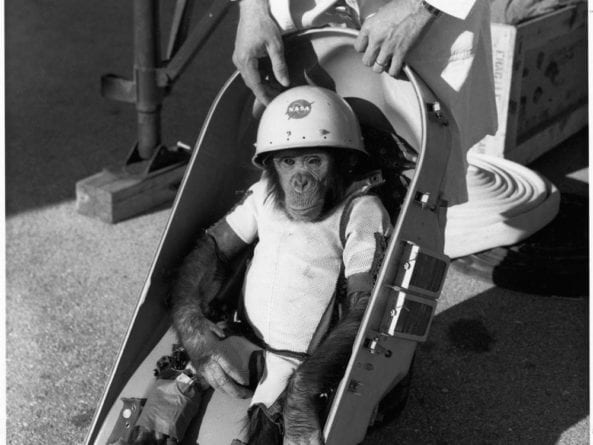
The day before the flight, two chimps were chosen for the mission: one primary, Ham, and one backup, Minnie. Ultimately, Ham was chosen for the experiment due to his “energy and good humour.”1
Ham was from Cameroon, Africa, and was purchased by the USAF on the 9th of July, 1959, for just $457. In the same year that Ham was born, the Soviet Union stunned the world with its Sputnik missions. They put the first artificial satellite and then the first animal, a stray dog called Laika, into orbit. There were never any arrangements for Laika to return to earth and sadly she died after just a few hours in space due to overheating. The Soviet government originally kept that secret and claimed she was euthanized due to oxygen depletion.
The US responded by creating NASA and training the team of chimps to pave the way for a manned mission. The space race was on.

Originally called subject 65 due to the reluctance to send a named chimp into space if anything were to go wrong, Ham was sent on the suborbital flight on the 31st of January, 1961. He was dressed in a nappy, waterproof pants and a spacesuit. He was also fitted with sensors so that computers could monitor his heart rate, breathing, and body temperature. Then, he was stuffed into the capsule of the 25-metre-long Mercury-Restone 2 spacecraft.2
During the flight, his vital signs and various assigned tasks were closely monitored by computers back on Earth. During the flight, there was a partial loss in cabin pressure caused by vibrations loosening a pin in the snorkel valve, forcing the valve to open. Thankfully, Ham was wearing a spacesuit which protected him from any harm.
The young chimp experienced crushing forces on take-off and re-entry. He was successful in pushing the levers that he had been trained to push proving that it was certainly possible to perform tasks in space.3 If he correctly pushed the levers, he would receive a reward of banana pellets but if he didn’t push the levers, he would receive an electric shock. During the flight, the wiring went haywire due to the malformation in the valve. As a result, no matter what lever Ham pushed, he was given a cruel shock.4
The flight lasted for 16 minutes and 39 seconds before splashing down. Around 12 minutes later, the first recovery signal was received from the spacecraft. Tracking showed it was around 60 miles from the nearest recovery ship. Ham was recovered from the Atlantic 27 minutes after landing. He was rescued just in time as during landing, a hole was blown in the bulkhead and the capsule had started to fill with water and sink.
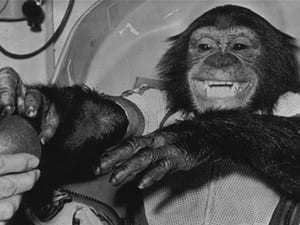
His trainer described the moment he was recovered from his capsule following the project – “I have never seen such terror on a chimp’s face.” Biologist, Jane Goodall, would say his face showed “the most extreme fear.”5
Following his flight, Ham spent the next 20 years alone in the National Zoological Park in Washington D.C. before being moved to North Carolina Zoo, where he was able to mingle with other chimps.
He passed away at the young age of 26 on the 19th of January, 1983. A proposal to make a museum exhibit of his stuffed skin was thankfully frowned upon. “Talk about death without dignity,” read an article in the Washington Post. A letter in the Smithsonian Archives from a sophomore at West High School in Painted Post, New York, summed up the public mood: “By treating his body like that of a stupid beast, people will continue thinking of apes as stupid beasts, and not the intelligent, almost human animals they really are.”6
Instead, he was cremated and buried beneath a plaque at the International Space Hall of Fame in Alamogordo, New Mexico. His bones were preserved and are on display at the National Museum of Health and Medicine.
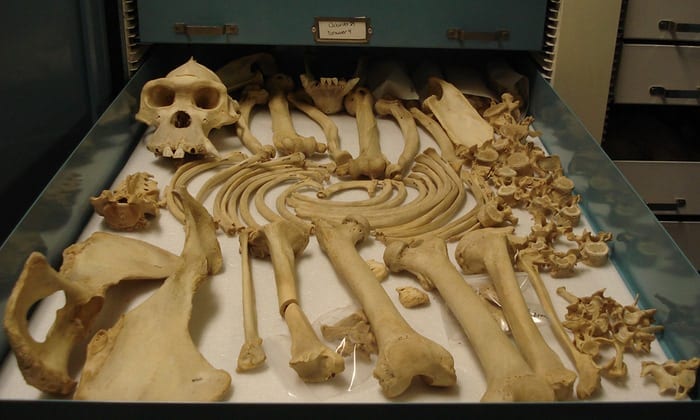
Ham was the real (unwitting) hero of the space race and he certainly paved the way for human space travel. Three months after his flight into space, astronaut Alan Shepard followed him. A year later, a chimp named Enos rode the Mercury space capsule twice around the planet two months before John Glenn made his orbit.
We must not forget that while Ham absolutely was a hero, he was also seen as a mere object and therefore became a victim. He was used as a guinea pig to see whether human life could survive in space. His life (and even his afterlife) is a grim reminder of the lengths humans will go to exploit animals in pursuit of their own ambitions.
Footnotes:
- Dayton Examiner, 19 September, 2011 – “Mercury-Redstone”
- The Guardian, 31 January, 2011 – “Shortcuts: Space Exploration”
- Hartford Examiner, 31 January, 2011 – “Mercury Rising”
- The Guardian, 25 February, 2009 – “Ham, the Real Hero of the Space Race”
- The Daily Herald, 1 February, 2014 – “U.S. Sends Chimp into Space”
- The Guardian, 16 December, 2013 – “Ham the Astrochimp: Hero or Victim?”
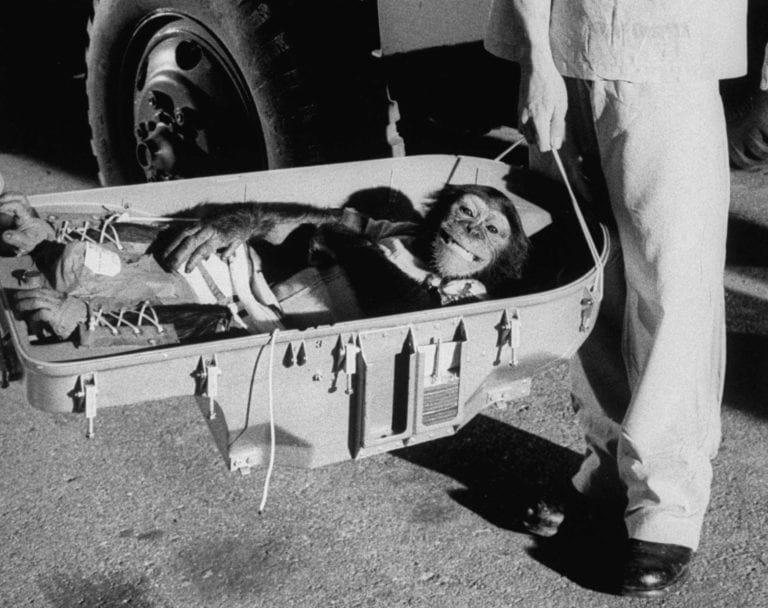


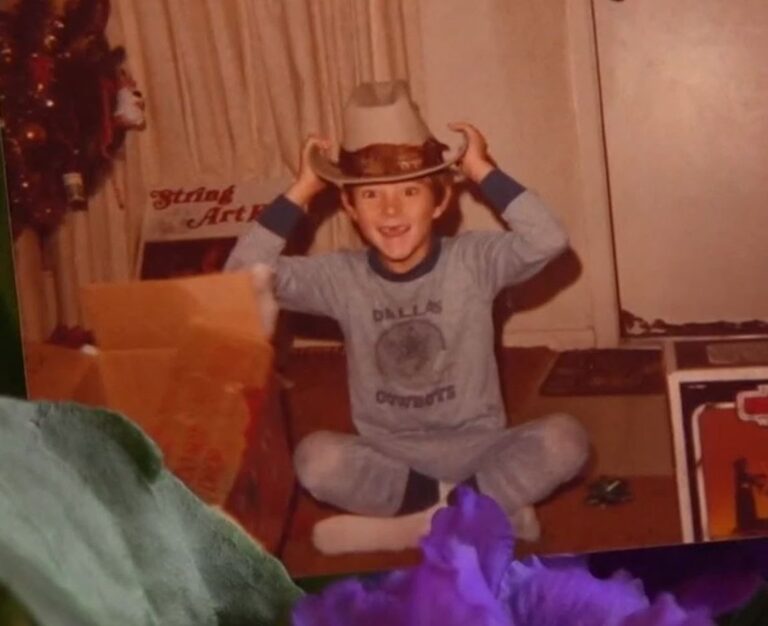

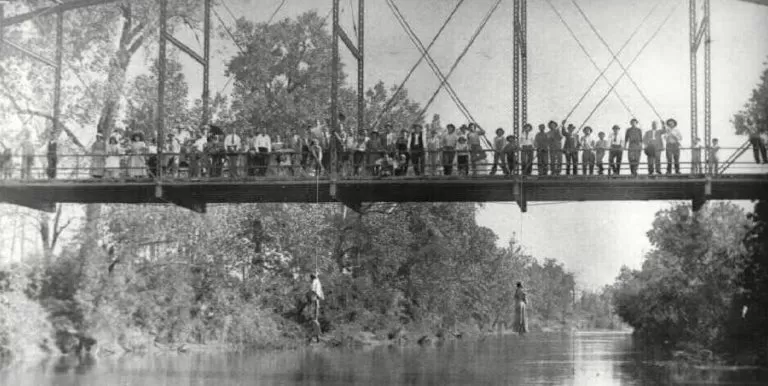

Comments:
Humans can be so selfish. Poor Ham. He really was a hero but at what cost?
At what cost? The space experts created devices for you to use internet.
Ham was an unwilling hero…and deserved better than he got. 20 yrs. Left alone in a zoo? Why?? No animal or human wants to be alone. I can understand maybe a yr of quarantine as back then, during that era people who scared of what could be brought back from space. But he deserved to be treated with love and grace. He was forced into something he had no idea he was doing. I’m sick of animals being used as test subjects to make things safe for humans…whether it’s space or…shampoo…animals have been used as test subjects. Ham deserved thanks…and… Read more »
@kelly
You wouldn’t be able to write that comment if it were not for satellites in space. Mankind has been using animals for milenia and sometimes there is no other way. Would you rather send a human being to see if he’s going to survive.
Yes. because a human would know what they got themselves into. The chimp did not and could not consent to any of this.
And thats where the whole animal right thing is going to far. Life of your own species is less important to you than a chimp.
Buddy, you know those pills and band aid you take every time you visit the pharmacies? Thousands of rats died to make sure that its safe for human consumption. You know all these food products and candy bars you see on the shelf? Tested on animals as well. All these household cleaning products? Test on animals. But wait, you’re gonna tell me that you only buy CFC products? Good for you. However, these companies are only able to make their product CFC because other companies HAVE tested their ingredients on animals to make sure they are safe for humans. You… Read more »
yes
It could be argued that it’s preferable for an animal to be used as a test subject instead of a person. However, that animal deserved to live a life of luxury upon his return to earth. He should have been treated like the hero he was. I see a lot of people arguing against animal testing, and I understand their point of view. But how would it be okay for things to just be tossed at humans without seeing if it’s safe first? What if the scientific community decided they have a good idea and just “test it out” on… Read more »
actually, enos was the one that was shocked.
Yes, it was Enos that was shocked numerous times and still performed his duty 100%. My father was his veternarian and this article leaves out how attached the officers and NCOs became to the animals. As a kid I remember going to visit the chimps and giving them apples, oranges and bananas when we lived in New Mexico. We visited Ham several times at the Zoo in Washington D.C.
[…] Le blog Morbidology (en anglais) […]
He looks pretty happy in that picture actually.